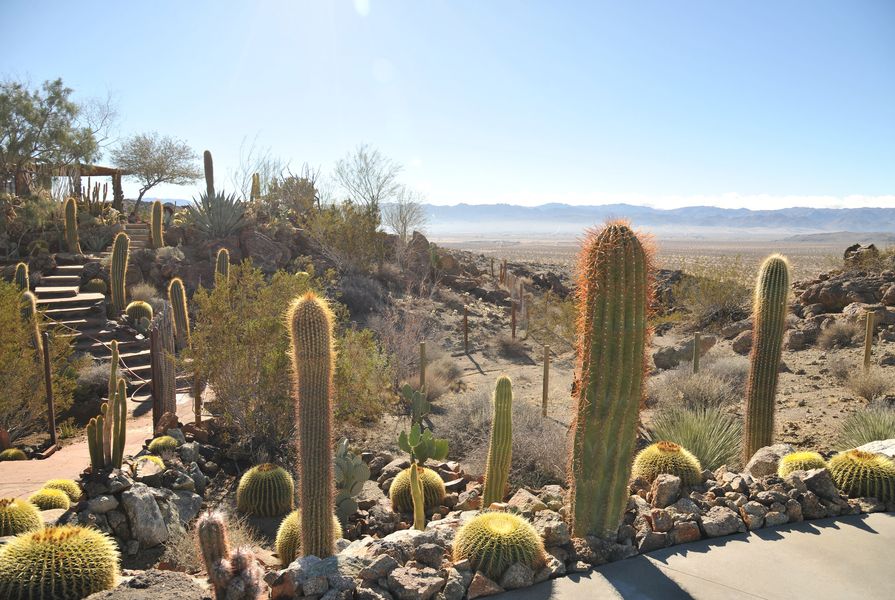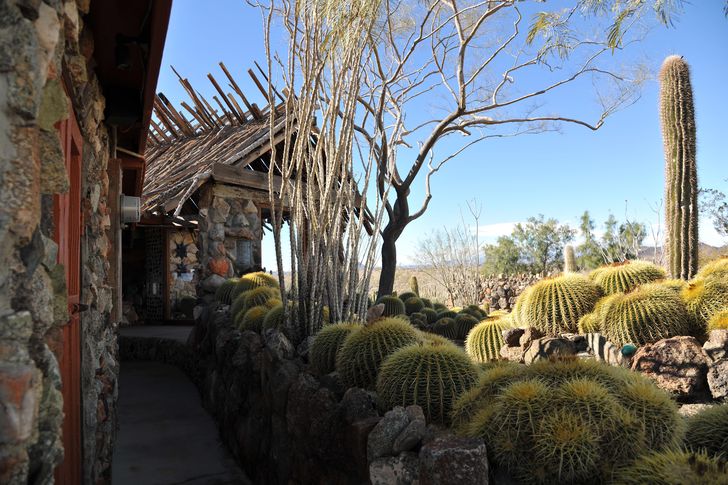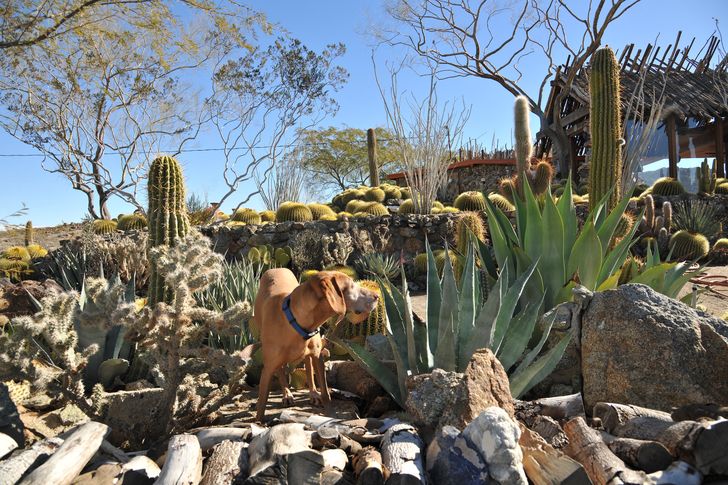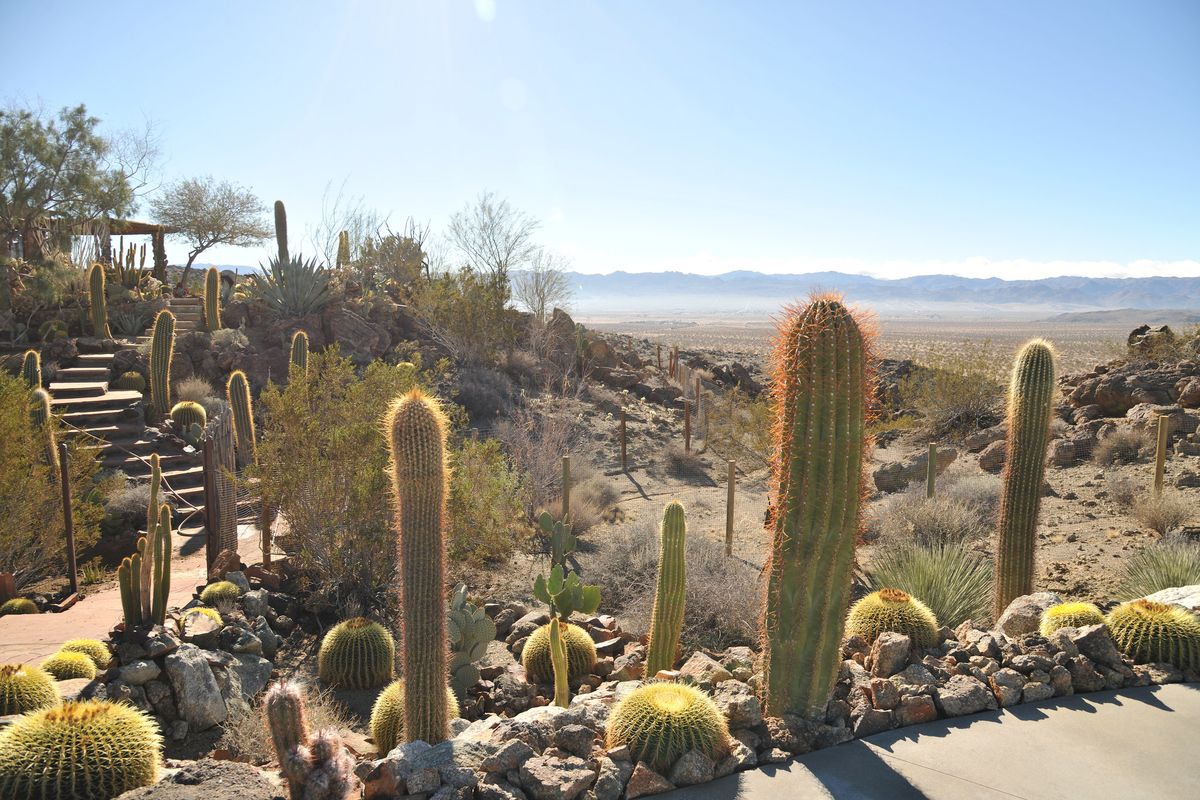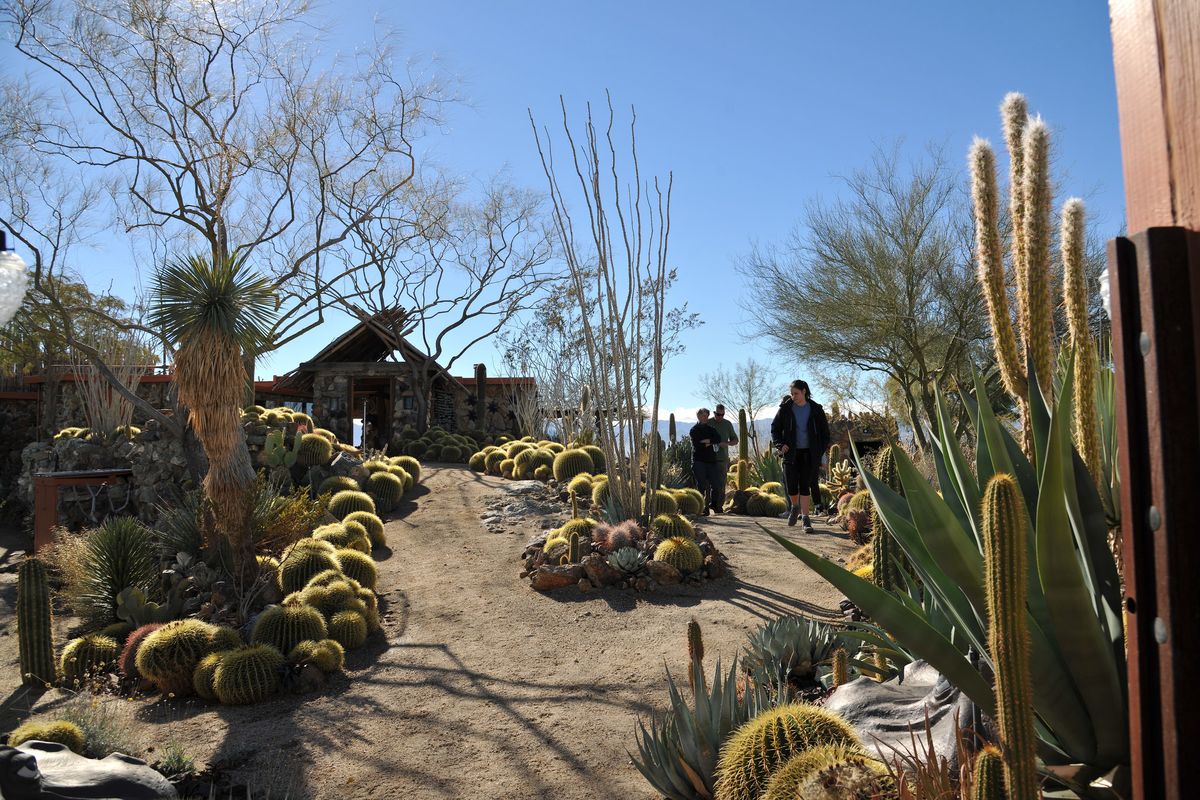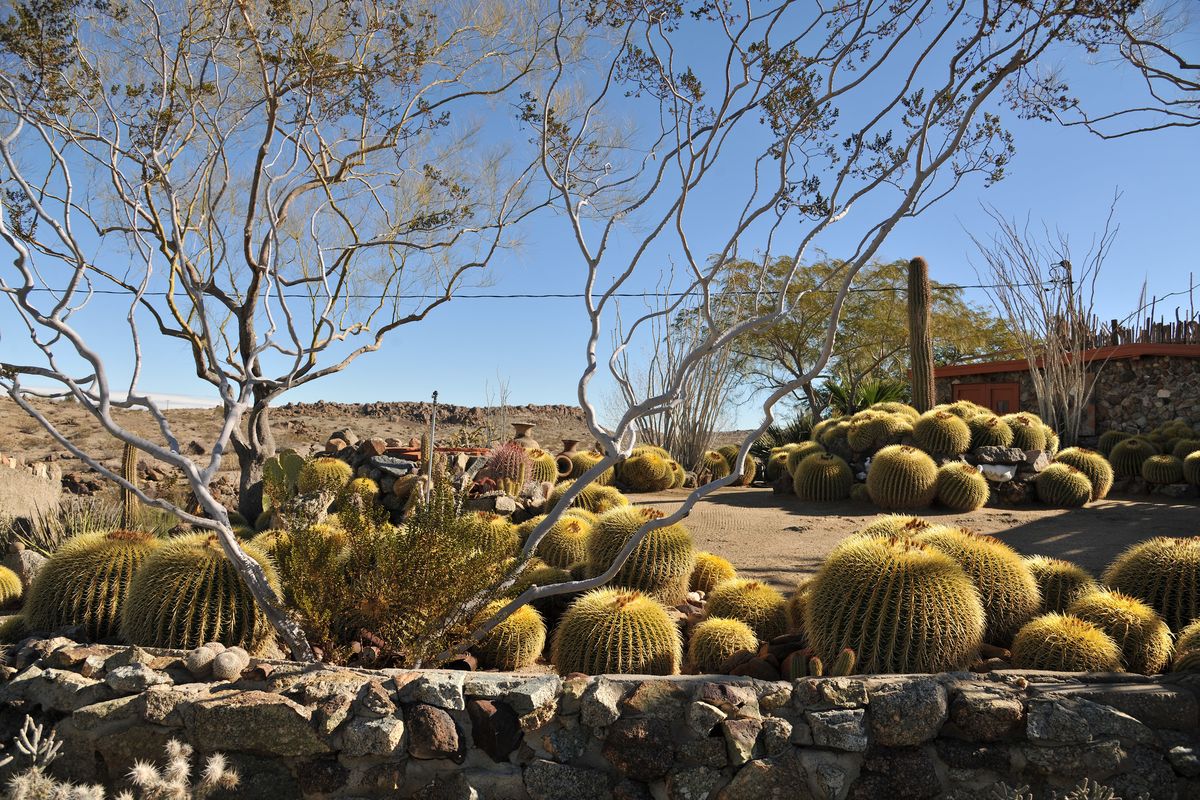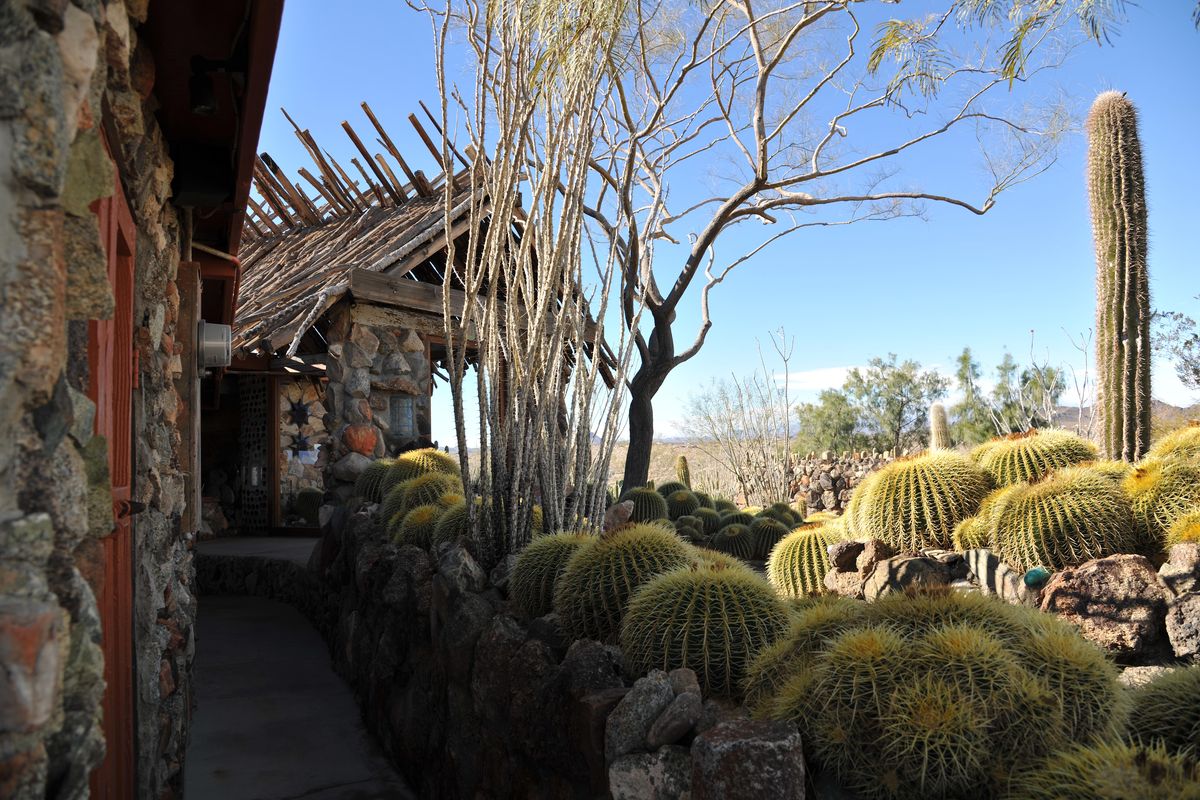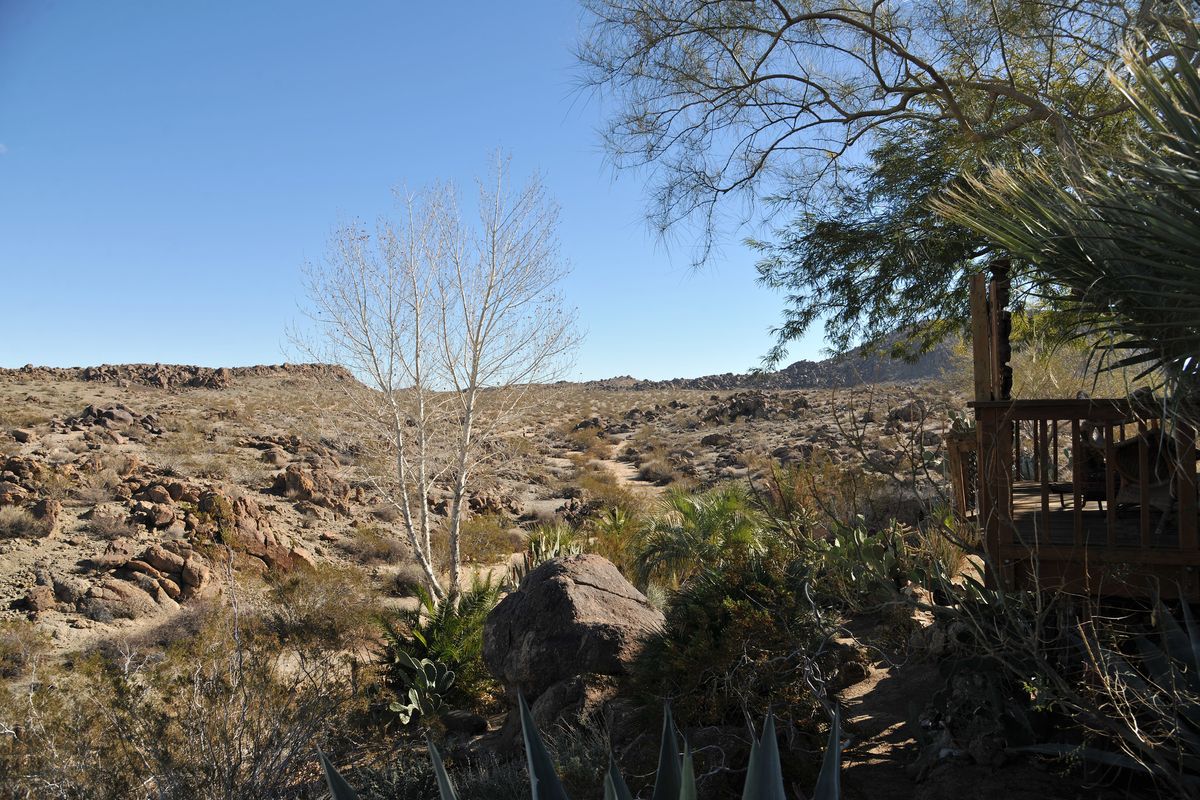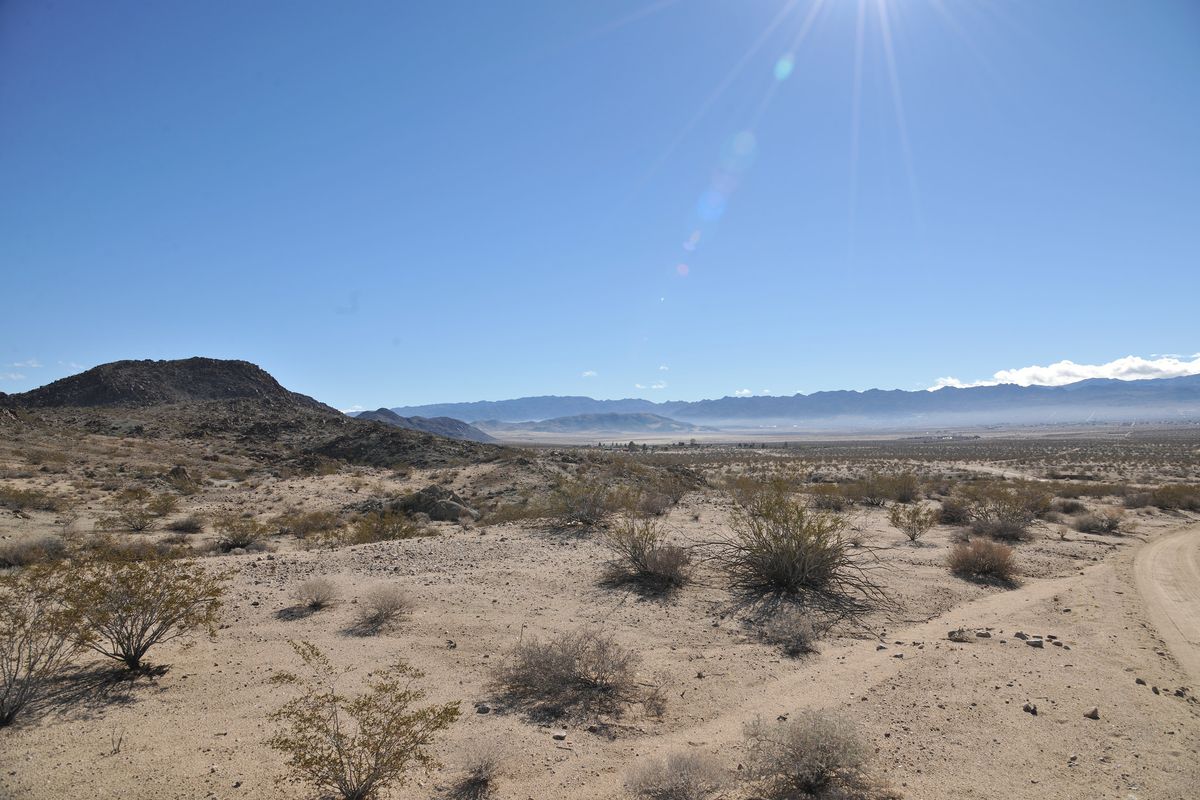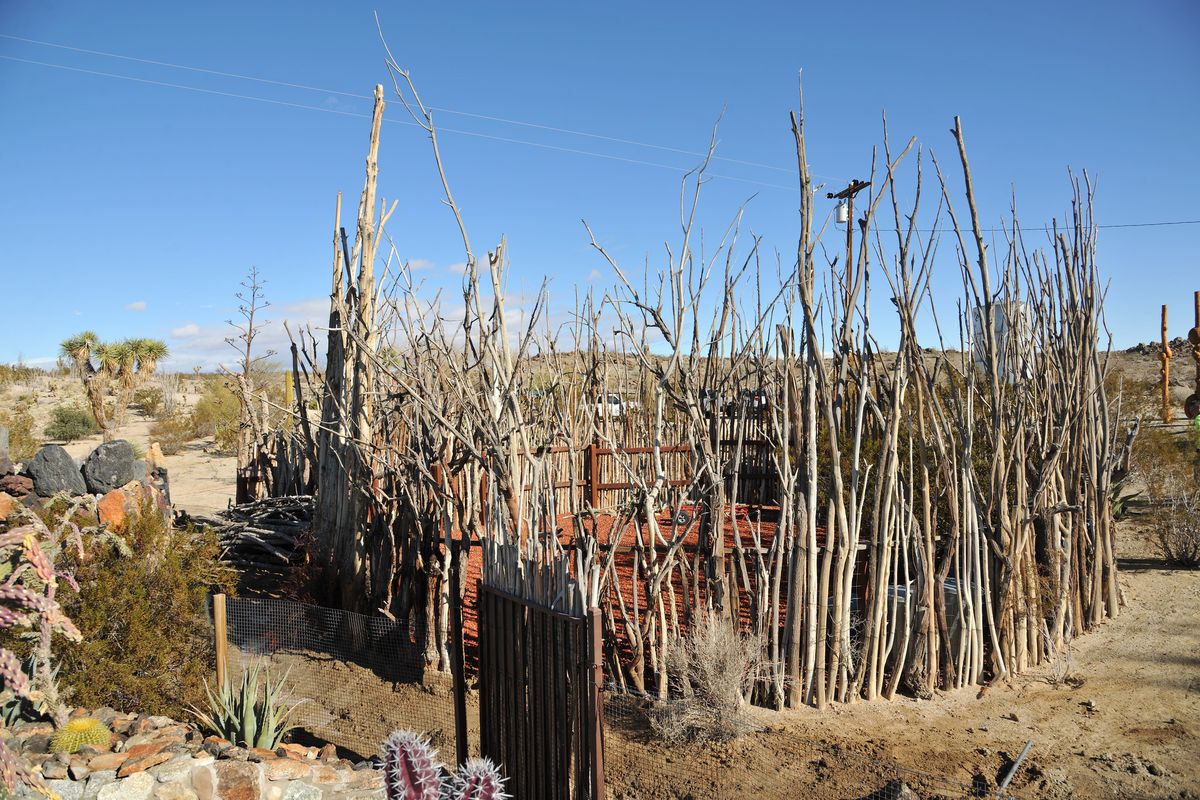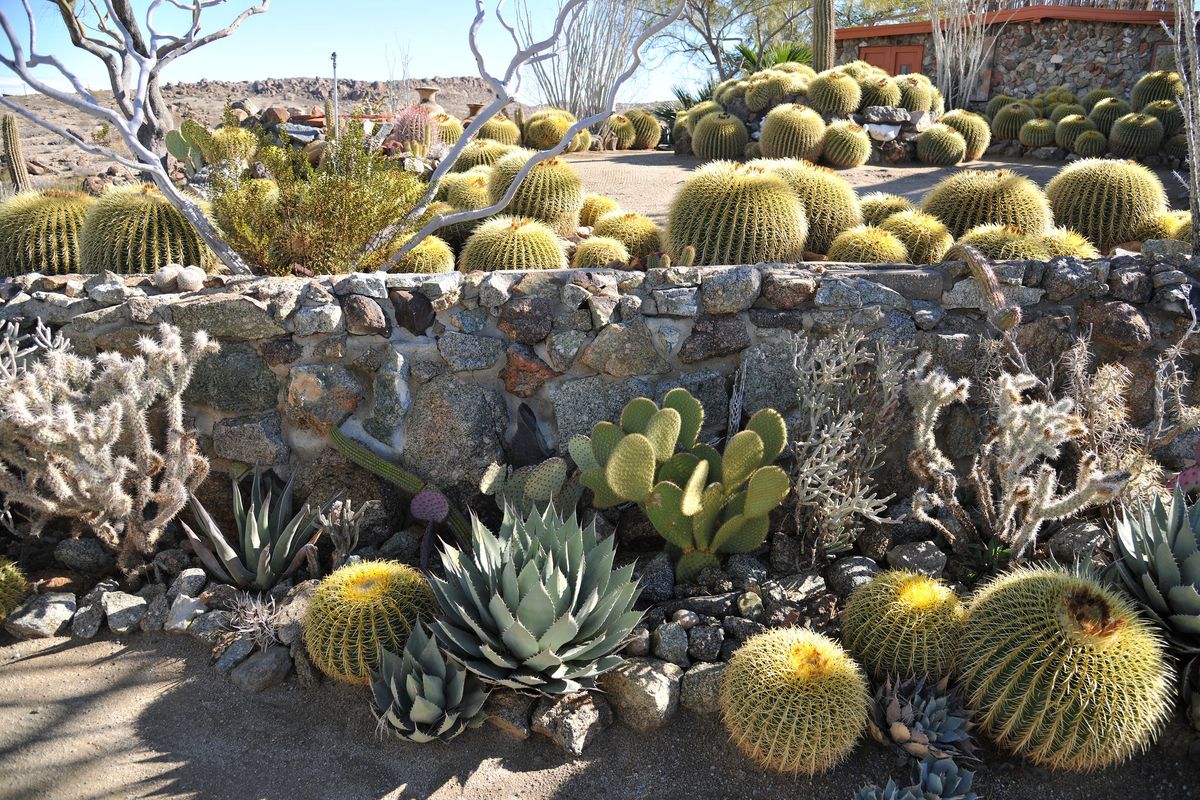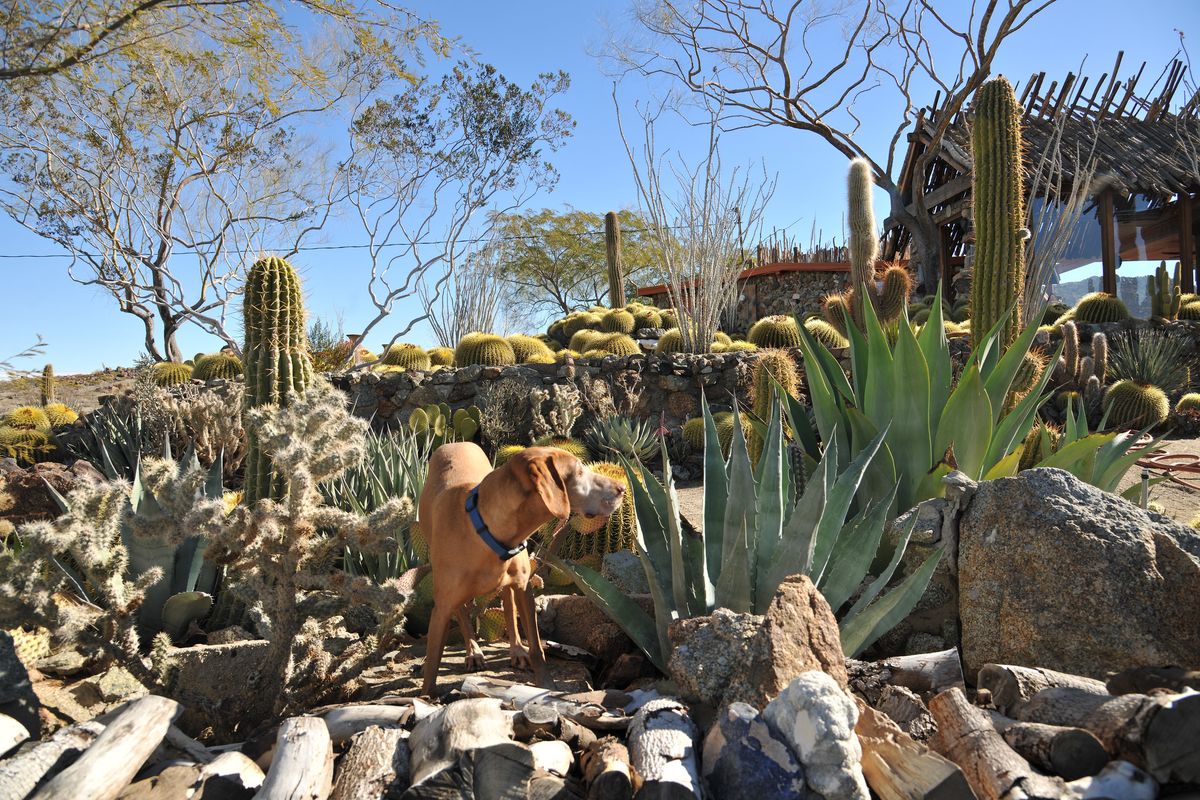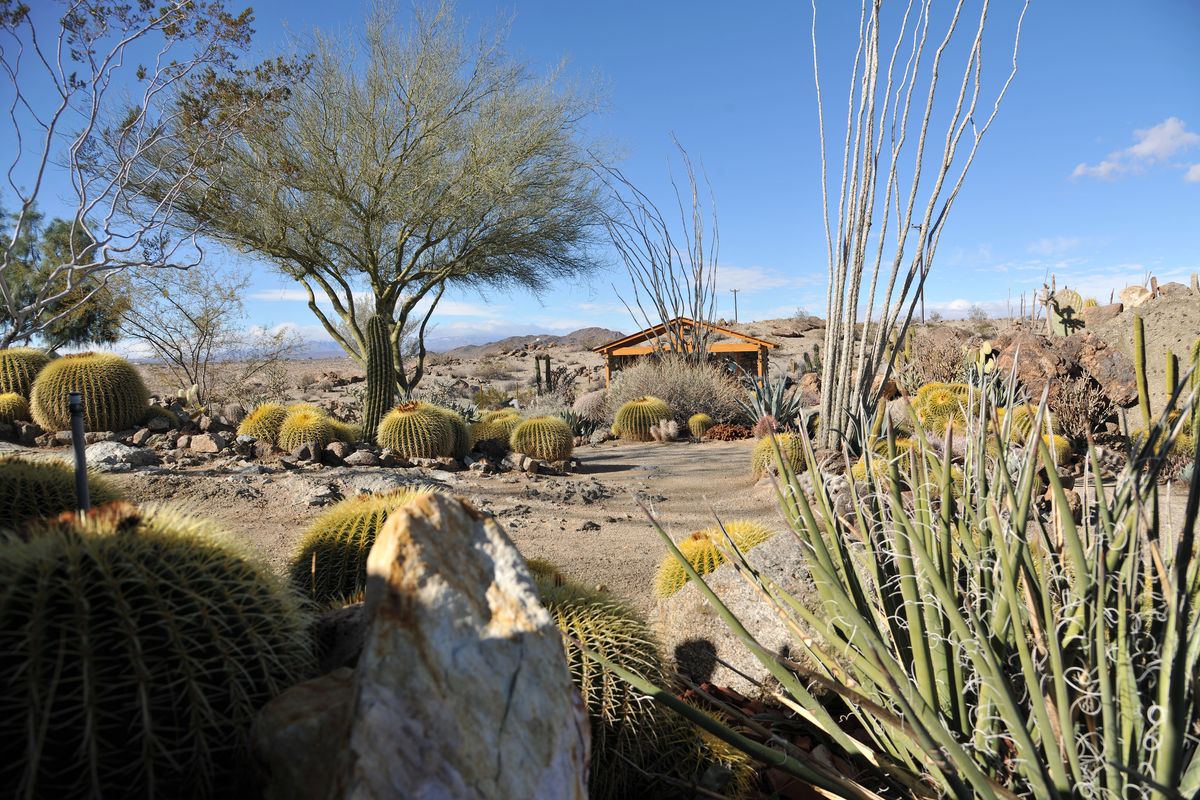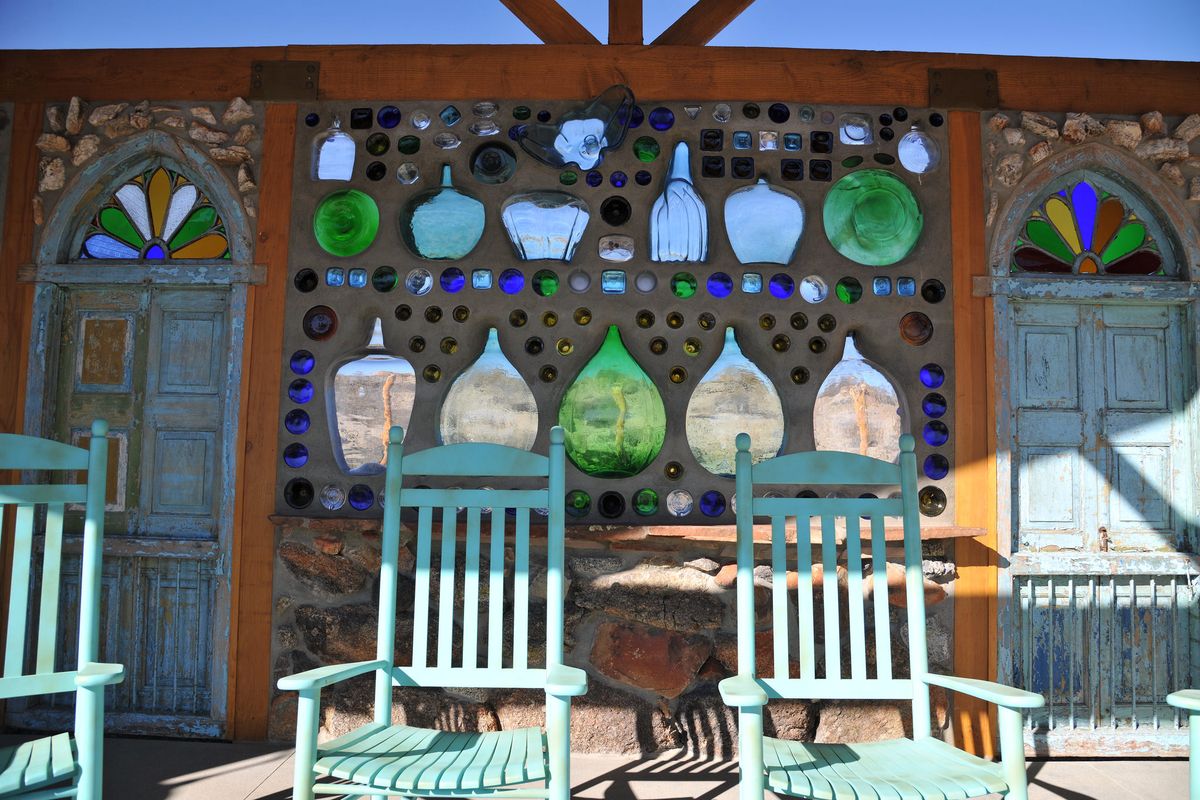Set high on a ridge just north of Joshua Tree National Park in the south-west of the USA, Mojave Rock Ranch emerges from the sand and screes as if it had always been there. A long, winding private drive through dotted local yucca, agave and cactus brings visitors up to the house and to the first long views of the surrounding Mojave Desert. Seasonal streams define the ridge, with stony washouts and floodways all around and rivulets for rushes of summer rain. Cold and dry, but fiercely hot with monsoonal downpours, the tough looking landscape belies its real fragility and ecological poise.
Troy Williams and Gino Dreese are landscape architects and garden builders and the ranch is their personal build, as well as being a long-term research laboratory for their own design and construction interests. The site design reveals deep insights into building design and landscape, mediating between the immediacy of small level changes, the path of the sun, captured views and the morning, afternoon and evening breezes. Citing the work of architect Mary Jane Colter (1869–1958) and the native architecture of the Pueblo, the primitive stone hut and weathered pine timbers of the ranch rise up as natural expressions of the local rock and scarce woods of the place. The architecture recalls Colter’s Hermit’s Rest (1914) at the Grand Canyon South Rim, designed as a stone ruin, rising from the rock. Barely enclosed, the buildings open out on all sides to the breathtaking landscapes of the nearby deserts – the Sonoran, Colorado and Mojave. Coyote and mountain lion wander the surrounding two hundred acres, their presence supported by arid land restoration projects.
The Mojave Rock Ranch, just north of Joshua Tree National Park in the USA, is the project of Troy Williams and Gino Dreese, landscape architects and garden builders.
Image: Michael Wright
A gorgeous stone pool terrace and shade house open up to the longest view, framed by tall Saguaro (Carnegia gigantea), and the rounded rock-like forms of barrel cactus (Echinocereus grusonii). In the distance, snow-capped mountains break the morning haze. At 700 metres, the ranch is set high and the plantings reflect the elevation. With temperatures not too cold, not too humid with only occasional snow and rare summer rain, the conditions favour a very wide selection of local plants, arrayed and arranged with rare skill and study.
Trees here barely grow. Palo Verde (Parkinsonia aculeata), Mesquite (Prosopis spp.) and a rare Australian mulga (possibly Acacia aneura) scarcely cut the sky. Local ocotillo (Fouquieria splendens) and Joshua tree (Yucca brevifolia) add vertical scale alongside the iconic saguaro (Carnegiea gigantean). Garden beds and terraces are flooded with barrel cactus of many sizes and ages, and then dotted with other rare succulents and cacti, relying on mass and form, colour and texture, and just occasional flowers. There are no shrubs or leafy perennials. Eruptions of drama derive from the spikes of Nolina or the spiky ears of beavertail cactus (Opuntia basilaris), and the furry balls of the teddy bear cholla (Cylindropuntia bigelovii). Cuddle me at your peril.
The Mojave Rock Ranch, just north of Joshua Tree National Park in the USA, is the project of Troy Williams and Gino Dreese, landscape architects and garden builders.
Image: Michael Wright
Barely sketched into the ridgeline scene, Mojave Rock Ranch is an essay in living – a perfect adaption to terrain, climate, local plants and the beauty of the arid lands. Mirroring the love and passions of its creators, it is truly a jewel of the high desert.
Occasional visits can be arranged by contacting Gino and Troy at mojaverockranch.net. The ranch is situated north of State Highway 62 out of Joshua Tree, California, USA and is not open to the public.

